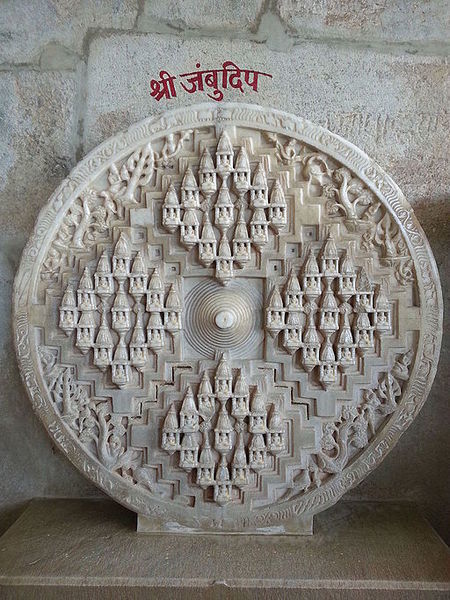Of course they are, it’s just that they are not on Jambudipa. Similarly, the Vikings and Ancient Germanic people were born in Eastern and Central Europe and Skandinavia, but it doesn’t mean they were born in Midgard. And Ven. Brahmavamso is living in Australia, but he surely isn’t walking upside down. People living in China do live in China, but not in the Middle Kingdom that is truly middle.
In Sinhala? So what? In Modern Hindi, dvīpa means ‘island’ and mahādvīpa means ‘continent’, so the actual meaning of ‘dvīpa’ is closer to ‘land mass’. Judging by the word form, it was borrowed from Sanskrit, and we find direct correspondence to these words in Pali. So, Jambudipa is considered to be one of the four mahādīpā in the entire Commentarial literature written on Sri Lanka. The usage is virtually identical in all other Indo-Aryan languages, ancient and modern (and I would venture a guess this is also correct for the Dravidic languages as well).
This is not quite true. If you follow the links to palikanon.de that I left in my previous comment and read the articles on each of the four great continents, you will see they are mentioned in the Canon and Commentaries quite frequently. For example, Uttarakuru is described in some detail in DN32, but mostly in later or Paritta-like texts with quasi-agical purposes that may be surmised to be late. You may see on the example of Uttarakuru how real nations or tribal confederations were mythologized as time passed.
Not sure about the continent, but there’s Brazil. A close association of Canada with the maple tree is also known, so no one would be surprized if Canada would be called the Land of the Maple Tree. Who knows, maybe Jambudipa started out as a similar poetic name for Bharat or Aryavarta? Huaxia, one of the historical names for the Chinese nations, can be traced back among other things to the 華 radical, which originally meant ‘flower’. Moreover, if we look at the Mahabharata’s list of the continents, almost all of them are named after trees and fruits:
Jambu (“Indian Blackberry tree”)
Plaksha (“Ficus religiosa (Peepal) tree”)
Shalmali (“Bombax tree”)
Kusha (“grass”)
Kraunca (“Mountain”)
Shaka (" Pine tree")
Pushkara (" Maple tree")
This list is important for another reason as well. It shows that the idea of Jambudipa is not necessarily a uniquely Buddhist one. We find it in the Puranas, we surely find it in the Jain literature, even in the Tattvarth-Adhigama-Sutra, the most prestigious non-canonical text of the entire tradition (so prestigious in fact, that it may be safely regarded as canonical). All of these traditions believed the entire Indic area to be part of Jambudipa, just as the Scandinavians believed to be living in Midgard. It would also be very weird for the Hindus and especially Jains of all people to borrow the concept of a region where the Lord Buddha was born and apply it to the entire India despite their ideological differences. Much more natural is the idea that the name comes from the Jambu trees and was borrowed from the large Indic tradition into Buddhism and not vice versa.


